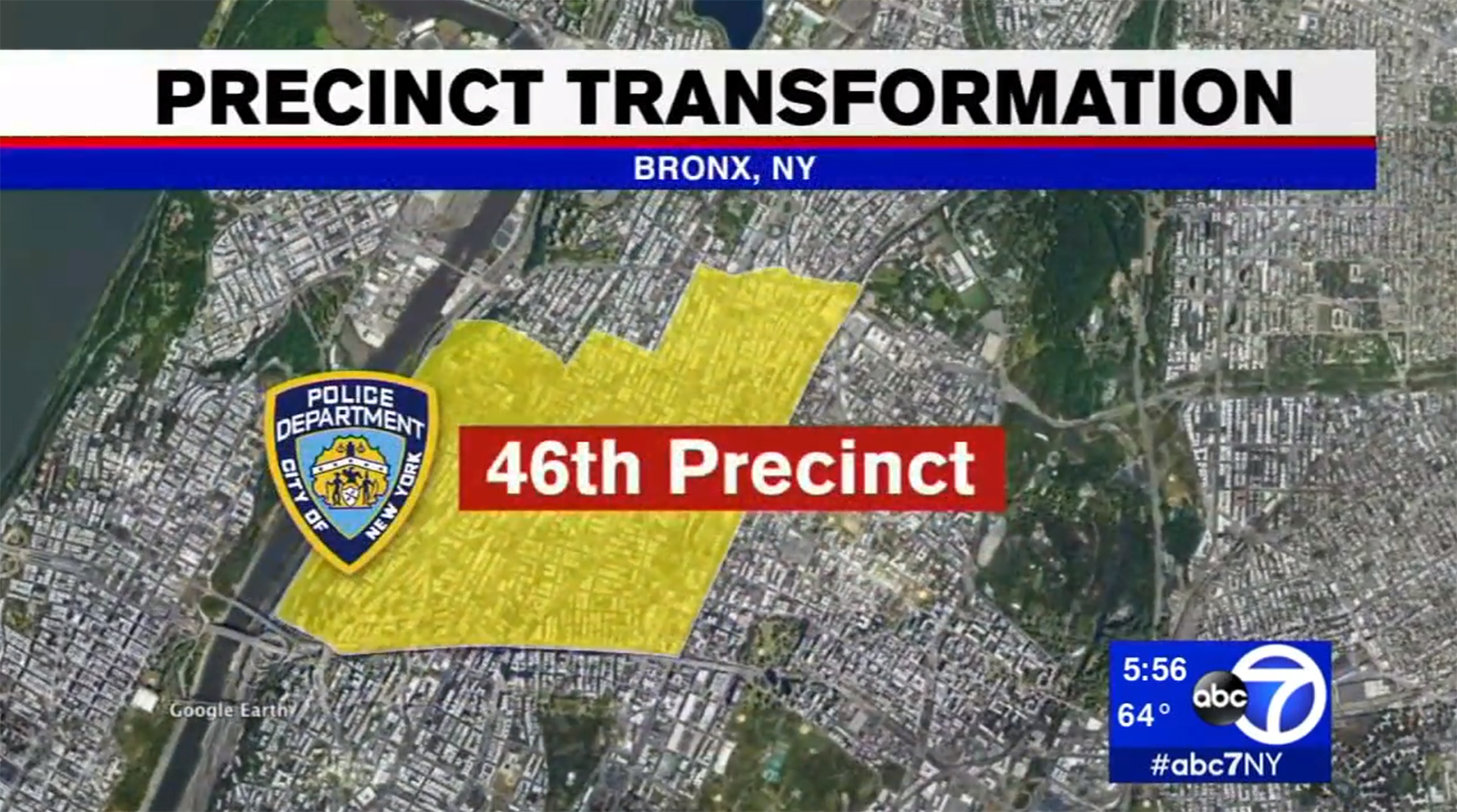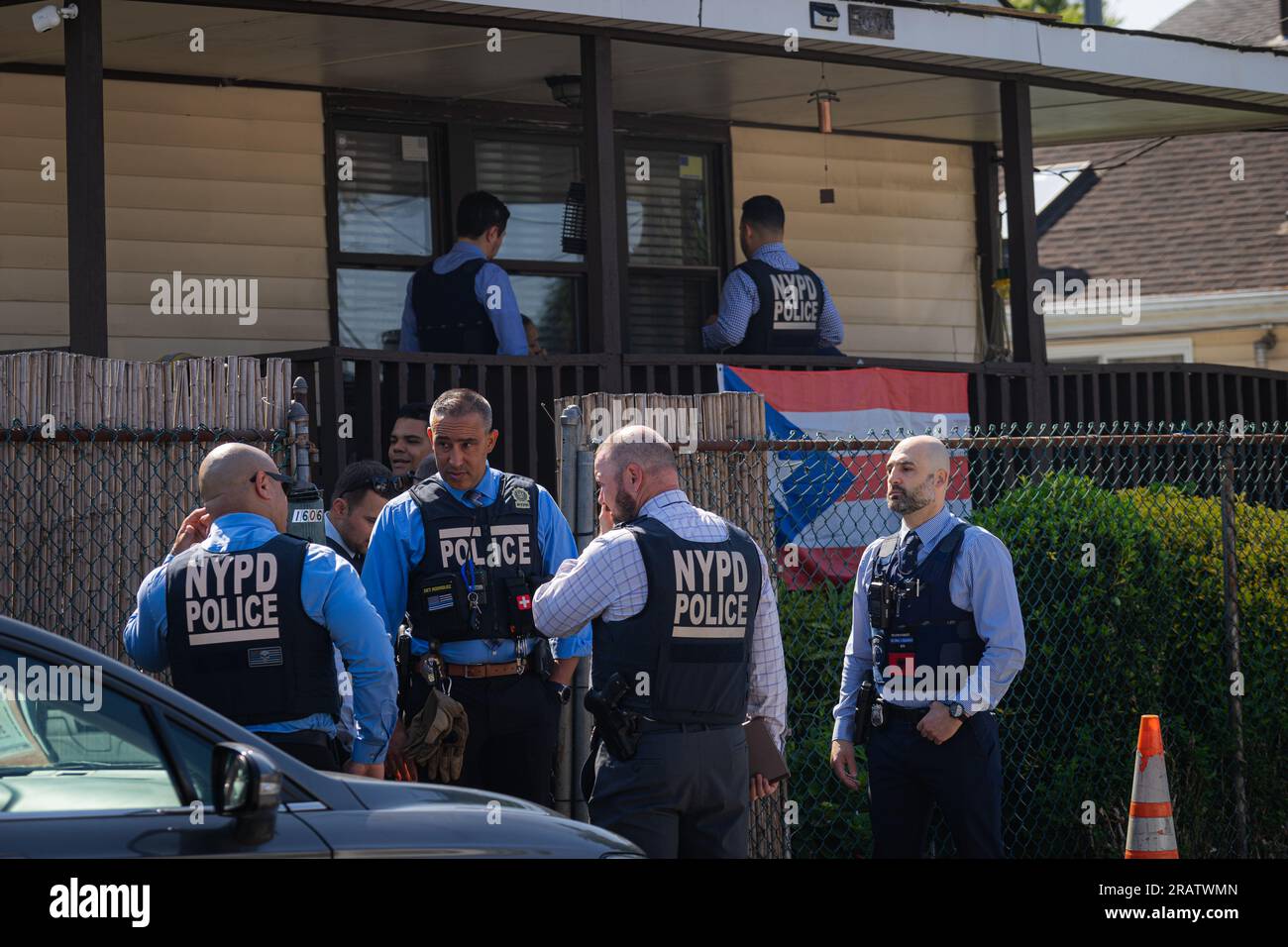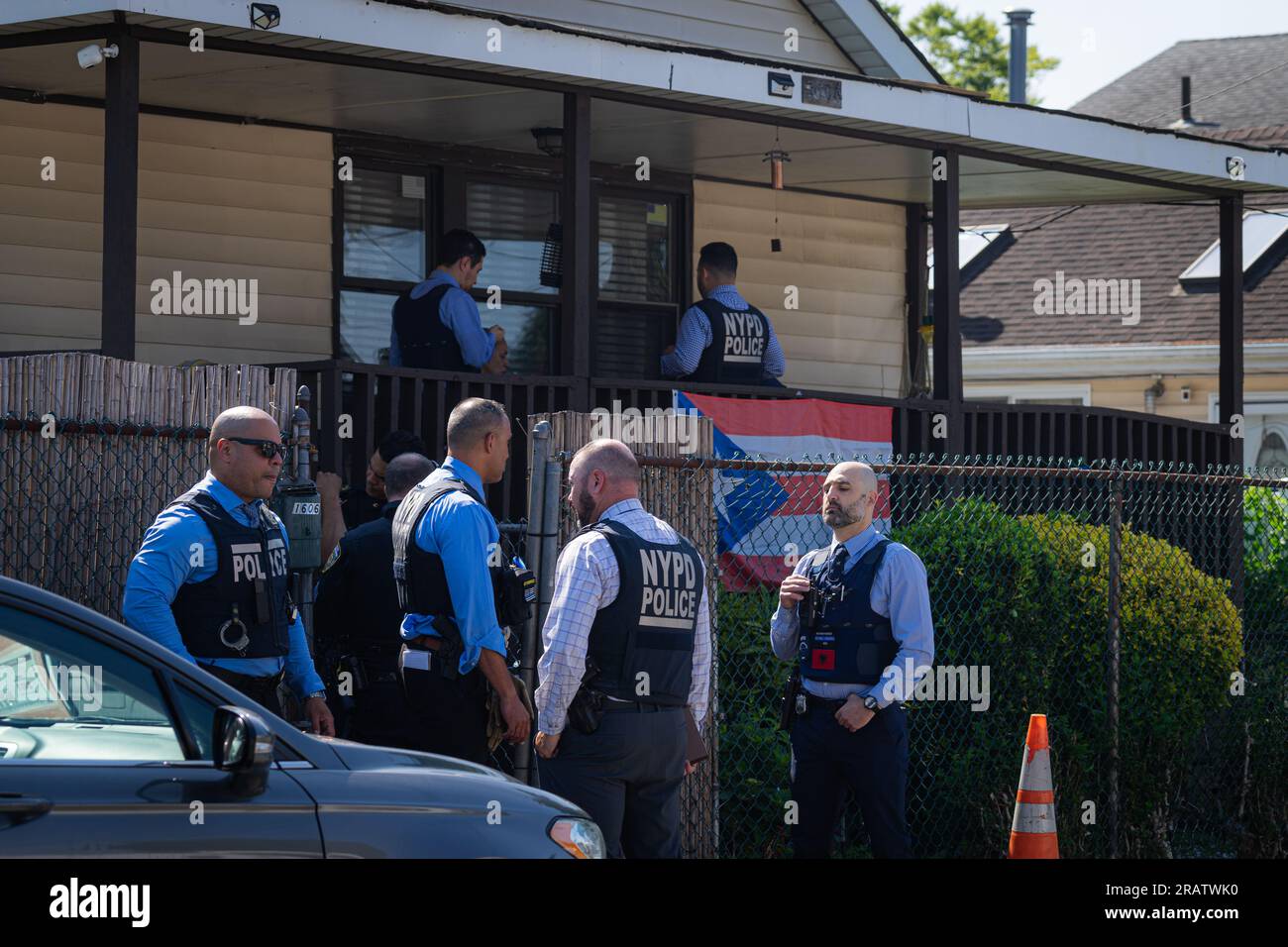Bronx's 46th Precinct: Guardians Of A Vibrant Community
Table of Contents
- The Heart of the Bronx: Understanding the 46th Precinct
- A Day in the Life: Responding to the Call
- Upholding Justice: Civil Rights and Accountability
- Community Engagement and Trust Building: The Precinct's Lifeline
- The Human Element: Stories Behind the Cases and the Number 46
- Challenges and Triumphs in Urban Policing
- Navigating the Digital Age: Technology in Policing
- Looking Ahead: The Future of the 46th Precinct
The Heart of the Bronx: Understanding the 46th Precinct
The 46th Precinct serves a significant portion of the West Bronx, an area characterized by its vibrant neighborhoods, bustling commercial strips, and a tapestry of cultures. From Fordham Road to the Grand Concourse, the precinct's jurisdiction is a microcosm of urban life, presenting a diverse array of policing challenges and opportunities. Officers here navigate crowded streets, respond to calls in multi-family dwellings, and engage with a community that is both resilient and demanding. The precinct's mission is multifaceted: to prevent crime, enforce laws, apprehend offenders, and maintain public order. However, its success is not solely measured by crime statistics but by the trust it builds within the community. In a densely populated urban environment, the relationship between law enforcement and residents is paramount. The 46th Precinct strives to be an integral part of the community, fostering an environment where residents feel safe, heard, and respected. This requires a deep understanding of local dynamics, proactive problem-solving, and a commitment to transparent and fair policing practices.A Day in the Life: Responding to the Call
The daily operations of the 46th Precinct are a testament to the unpredictable nature of police work. From routine patrols to emergency responses, officers are constantly on alert, ready to face any situation. A typical day might involve mediating neighborhood disputes, responding to domestic incidents, investigating burglaries, or providing assistance during medical emergencies. Each call presents a unique set of circumstances, demanding quick thinking, empathy, and a steadfast commitment to public service. The sheer volume and variety of incidents handled by the 46th Precinct underscore the critical role it plays in maintaining the fabric of urban society. Officers are often the first point of contact for individuals in distress, offering immediate aid and navigating complex human situations. This constant engagement with the community, in both its moments of crisis and calm, builds a unique bond between the precinct and the people it serves. The challenges are immense, but so is the dedication of the men and women in uniform who answer the call day in and day out.Investigating Tragic Losses: Homicides and Violent Crimes
Among the most challenging and heartbreaking duties of any police precinct, including the 46th Precinct, is the investigation of homicides and violent crimes. These cases demand meticulous attention to detail, advanced forensic techniques, and an unwavering commitment to bringing perpetrators to justice. The impact of such crimes reverberates deeply within communities, leaving lasting scars on families and neighborhoods. Consider the profound grief and urgent need for answers that follow incidents like the tragic death of Leslie Hope Houston, 46, who was found unresponsive in her Anderson, Indiana home on October 11, 2024, and later died from a massive brain bleed. Or the devastating loss of Stanley Pratt, 46, and Centeria Fields, 41, who were shot to death in their Peoplestown home in 2021, a cold case that still prompts emotional pleas for evidence from family members. While these specific incidents occurred outside the Bronx, they powerfully illustrate the types of horrific violent crimes that police departments across the nation, including the 46th Precinct, are tasked with solving. Each case represents a life cut short, a family shattered, and a community yearning for closure. The dedication of detectives and officers in these investigations is paramount, as they work tirelessly to piece together evidence, interview witnesses, and ultimately, seek justice for victims and their loved ones. The complexity of these cases, often involving intricate webs of relationships and circumstances, requires immense skill and perseverance. The sheer brutality of some crimes, such as the unimaginable tragedy in Duxbury in January 2023, where Lindsay Clancy, 33, allegedly strangled her three young children, underscores the dark realities that law enforcement must confront. While not within the 46th Precinct's jurisdiction, these cases highlight the psychological toll on officers who regularly encounter the darkest aspects of human behavior. The ability to maintain composure, follow protocol, and pursue justice in the face of such profound human suffering is a testament to the resilience and professionalism of police officers.The Search for the Missing: A Race Against Time
Another critical aspect of the 46th Precinct's work involves missing persons cases, which often present unique challenges due to the lack of immediate evidence and the ticking clock of time. The emotional toll on families is immense, and officers often become their primary source of hope and information. The urgency is palpable in cases like that of Daniel Geurkink, who hasn't been seen or heard from since March 18, 2007, when he was 46 years old and went missing from Baldwin, Wisconsin, last seen wearing blue jeans. Similarly, the ongoing search for Joseph Bruce Kaulaity, whose missing age was 46 years, and is now 66 years old, continues to weigh heavily on his family. These cases, though geographically distant, represent the universal anguish of families grappling with the unknown. The 46th Precinct regularly handles similar situations within its own borders, from runaway teenagers to vulnerable adults who vanish without a trace. The Missing Endangered Person Alert issued for Namrud Tessema, 46, from Valhalla, New York, who left New York in September on a spiritual journey, exemplifies another common scenario. These alerts mobilize law enforcement agencies across jurisdictions, highlighting the collaborative nature of missing persons investigations. The precinct also deals with cases like Ignacio Contreras Marquez, missing since October 5, 2018, from San Bernardino, California, a Hispanic male whose disappearance remains a mystery. While these specific individuals may not be directly linked to the Bronx, they illustrate the types of complex, often long-term, missing person investigations that the 46th Precinct and other urban police forces dedicate significant resources to, understanding that every missing person is someone's child, parent, or friend. The hope of finding them alive drives these relentless efforts.Upholding Justice: Civil Rights and Accountability
The foundation of effective policing rests on the principles of justice, fairness, and accountability. The 46th Precinct, like all law enforcement agencies, operates under the critical mandate to uphold the civil rights of all individuals. This commitment is not merely a legal obligation but a moral imperative, essential for building and maintaining public trust. The concept of accountability within law enforcement has become a central focus in public discourse, emphasizing the need for transparency and consequences when officers violate their oath. The guilty plea of Derek Chauvin to federal charges, not only for denying George Floyd his civil rights but also for denying a 14-year-old boy his civil rights, serves as a stark reminder of the serious implications of such violations. While this case is not directly tied to the 46th Precinct, it underscores the broader national conversation about police conduct and the unwavering expectation that law enforcement officers will act within the bounds of the law and respect the rights of every citizen. The 46th Precinct is continuously working to reinforce training, policies, and internal oversight to ensure that its officers adhere to the highest standards of conduct, recognizing that every interaction can either strengthen or erode the community's faith in justice. This dedication to upholding civil rights is a cornerstone of responsible policing in a democratic society.Community Engagement and Trust Building: The Precinct's Lifeline
Beyond responding to emergencies and investigating crimes, a crucial aspect of the 46th Precinct's mission is proactive community engagement. Building trust is not a one-time event but an ongoing process that requires consistent effort, open communication, and genuine partnership. The precinct actively participates in community meetings, youth programs, and local events, fostering relationships that extend beyond law enforcement interactions. Initiatives such as "Coffee with a Cop," community council meetings, and neighborhood watch programs provide platforms for residents to voice concerns, offer feedback, and collaborate with officers on local safety initiatives. These interactions humanize the police force, allowing residents to see officers not just as figures of authority but as individuals dedicated to their well-being. By listening to community needs and working together on solutions, the 46th Precinct aims to create a shared sense of responsibility for public safety. This collaborative approach is vital in fostering a resilient community where residents feel empowered to contribute to a safer environment, recognizing that effective policing is a partnership between law enforcement and the people it serves.The Human Element: Stories Behind the Cases and the Number 46
Every statistic, every case file, and every police report at the 46th Precinct represents a human story—a life impacted, a family affected, a community touched. It's in these individual narratives that the true weight and significance of law enforcement's work become apparent. The precinct's officers are not just processing data; they are interacting with people at their most vulnerable, their most desperate, and sometimes, their most triumphant moments.The Weight of Age: A Recurring Motif
Interestingly, the number "46" itself, which designates this particular Bronx precinct, appears with a striking frequency in various human experiences, often linked to moments of profound significance or tragedy. From historical events to personal crises, the age 46 seems to mark a particular juncture in life. For instance, President John F. Kennedy was 46 when he was assassinated in Dallas on November 22, 1963, an event that profoundly shaped a nation. While a historical tragedy far removed from the daily beat of the Bronx, it serves as a powerful reminder of how lives, regardless of their prominence, can be abruptly cut short. In the context of the data provided, we see the age 46 recurring in various missing persons and death cases: Daniel Geurkink was 46 when he went missing, Leslie Hope Houston was 46 when she was found unresponsive, Stanley Pratt was 46 when he was shot to death, Joseph Bruce Kaulaity's missing age was 46, and Namrud Tessema was 46 when an endangered person alert was issued for him. This recurring motif, while perhaps coincidental, underscores the fact that individuals in the prime of their lives, regardless of their background or location, can become victims of unforeseen circumstances. For the 46th Precinct, this means that the individuals they serve, protect, and investigate often fall within a wide age range, including those at this significant life stage, highlighting the universal vulnerability that transcends demographics.Beyond the Headlines: Unseen Lives
Beyond the dramatic headlines of homicides and missing persons, there are countless other human stories that intersect with the 46th Precinct's daily work. These are the narratives of resilience, struggle, and everyday life in the Bronx. Consider the quiet joy of a wedding, like the photo found of Carl Kenneth Reed and his bride cutting their wedding cake in a Ludington, MI newspaper. While not a case for the police, it represents the normalcy and happiness that officers strive to protect. The precinct's work allows families to celebrate these milestones, to live their lives free from fear. Conversely, the officers also encounter the hidden struggles that don't make the news, the quiet desperation that often underlies public safety issues. Every interaction, from a simple traffic stop to a response to a noise complaint, involves engaging with real people, each with their own complex backstory. The ability of officers to approach these situations with empathy, professionalism, and a commitment to serving the community is what truly defines the human element of the 46th Precinct. They are not just responding to incidents; they are touching lives, often at their most critical junctures, reinforcing the idea that behind every call, there's a human being seeking help, protection, or justice.Challenges and Triumphs in Urban Policing
Policing in a dynamic urban environment like the Bronx presents a unique set of challenges. High population density, socioeconomic disparities, and the constant ebb and flow of city life contribute to a complex landscape for law enforcement. Officers of the 46th Precinct must contend with issues ranging from gang violence and drug trafficking to quality-of-life complaints and mental health crises. The sheer volume and diversity of these challenges demand adaptability, specialized training, and unwavering commitment. Despite these hurdles, the 46th Precinct also experiences significant triumphs. These successes are often found in the daily acts of heroism, the successful resolution of complex cases, and the quiet moments of community connection. A child reunited with their family, a dangerous criminal apprehended, a community initiative that reduces crime rates—these are the victories that fuel the dedication of the officers. Each triumph, big or small, reinforces the precinct's vital role in fostering a safer and more stable environment for the residents of the Bronx. It's a continuous battle, but one fought with resilience and a deep sense of purpose.Navigating the Digital Age: Technology in Policing
Modern policing, including at the 46th Precinct, is increasingly reliant on technology to enhance efficiency, improve investigations, and foster transparency. From sophisticated data analytics to body-worn cameras and advanced communication systems, technological advancements are transforming how law enforcement operates. These tools provide critical support in solving crimes, locating missing persons, and managing daily operations. For instance, the ability to quickly issue a missing endangered person alert, like the one for Namrud Tessema, or to share information about missing individuals like Daniel Geurkink (last seen wearing blue jeans) or Joseph Bruce Kaulaity (described as a white male, 5' tall), is greatly enhanced by digital networks. Databases allow officers to cross-reference information, track patterns, and identify potential leads with unprecedented speed. The use of digital evidence, such as the photograph of Carl Kenneth Reed and his bride cutting their wedding cake, even if just a personal detail, highlights how digital footprints can sometimes play a role in locating individuals or confirming identities, though caution is always exercised in sharing unverified information. Furthermore, surveillance footage, social media analysis, and forensic tools are indispensable in investigating complex cases, from homicides like those of Stanley Pratt and Centeria Fields to understanding the context of civil rights cases like the Chauvin plea. While technology offers immense advantages, it also necessitates ongoing training and careful consideration of privacy and ethical implications, ensuring that these powerful tools are used responsibly and effectively to serve the community.Looking Ahead: The Future of the 46th Precinct
The 46th Precinct stands at a crucial juncture, continually adapting to the evolving needs of the Bronx community and the broader landscape of urban policing. The future will undoubtedly bring new challenges, from emerging crime trends to the complexities of a rapidly changing society. However, the precinct's commitment to its core mission—to protect and serve—remains unwavering. Looking ahead, the 46th Precinct will likely continue to prioritize community-based policing, leveraging technology responsibly, and fostering a culture of accountability and continuous improvement. The goal is not just to respond to crime but to prevent it, to build stronger relationships with residents, and to create a safer, more vibrant Bronx for generations to come. We invite you to reflect on the vital work performed by the officers of the 46th Precinct every day. What are your thoughts on the role of community engagement in policing? Share your perspectives in the comments below, or explore other articles on our site to learn more about public safety initiatives in New York City.
Welcome2TheBronx, WATCH: A Bronx Precinct Once Known as 'Most...

Bronx precinct hi-res stock photography and images - Alamy

Bronx precinct hi-res stock photography and images - Alamy